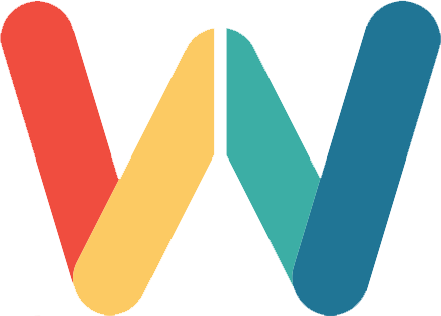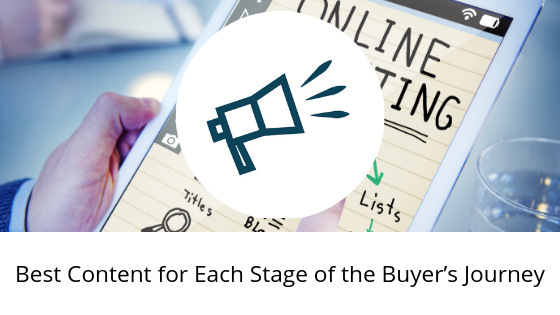All people go through every stage in the buyer’s journey, and they do it in the same order. That means content needs to be created for each stage equally. People are so quick to lean in and create awareness content over and over again, but that is detrimental to converting strangers into customers of your business. Content must be strategically created to nurse people through the buyer’s journey, so it doesn’t feel forced or salesy. The best way to do that is knowing what type of content is best suited for each stage, and then moving forward.
Awareness
This is the first stage of the buyer’s journey, and the one most people center a majority of their content around. During the awareness stage, people are trying to find answers or solve specific problems. These people are strangers to your business and are hoping you have content that can educate them and direct them toward a solution. That means your content should be entirely informational without selling your business or services. The best content for the awareness stage includes:
-
Blogs – this is the go-to for awareness stage content. These blogs should be entirely informational, like this blog you’re reading. You shouldn’t focus too much on your company or services, but focus on helping the reader find answers.
-
Checklists – these are quick and easy ways to put out helpful content on so many different topics. You can do checklists on how to do things, whether in a step-by-step process or overall.
-
Ebooks – certain topics have a lot of components to them and can’t be covered in a blog. Ebooks can cover a wide-range of topics with links and images to give people a deep-dive and have a table of contents to make them easily searchable.
-
Reports – these can be either data- or research-driven and should be presented in an easily digestible way. If the information is complicated, there should be commentary to help the reader thoroughly understand.
-
Instructional video – some people don’t want to read how to do something, so they are looking for a visual instead. Putting together a short instructional video that has subtitles for people who don’t want to watch with sound is very effective.
Consideration
If someone is looking for consideration stage content, they are in the middle of the sales funnel. That means they have identified their problem and are now searching for the most effective solution. Content in this stage should showcase why your company is the best fit for them in terms of services and personality, establish trust, and increase brand awareness. People stay in the consideration stage longer than the others because they want to make sure they are selecting the best option. Content for this stage includes:
-
Client case study – while testimonials don’t help your case with potential buyers, case studies do wonders. The difference is case studies do an in-depth review of how and to what extent your company helped a client.
-
Statistics sheet – there’s a lot of power in numbers. If you have any data surrounding your company and what it does, compiling it into a one-sheet to be displayed online is a great way to show the effectiveness of your products.
-
Demo videos – depending on what your company sells, showing how your product or service works and how it will benefit you is extremely helpful. The video format also adds a face and personality to your brand.
-
Product FAQs – the company that provides the most answers to the buyer’s questions is usually the winner. Think about everything people would want to know about your product or service and answer away.
-
Product comparison – get your dukes up because it’s time to demonstrate why you’re the best option of other companies in your industry. The best way to do that is by directly comparing key points of your product against another.
Decision
This is the stage it all comes down to. During the decision stage, people are ready to pick the company they are going to buy from. They’ve identified their problem, researched what solutions exist, and now they are going to select where to purchase that solution. Think of content in this stage as getting in a final word and making it easy for them to make a purchase. You should present something that has a call-to-action and entices them to pull the trigger. Content in the decision stage includes:
-
Coupon – price is a big factor when it comes to making a purchase. Coupons make your price more competitive, and they also make buyers feel like they are getting a good deal and need to buy before the deal disappears.
-
Free trial – you have a great product, so you know if people got a chance to try it, they’d like what they see. Offer a one-week or 30-day free trial to get people more familiar with your product and entice they to buy.
-
Freebies – different from a free trial, freebies are given away entirely free with no strings attached. Example: give away a logo design for free if you are a graphic design agency. The thought is they will like you and your work, so they will seek your design services.
-
Evaluation – people may know they need your service, but they may not know how badly they need it. If you evaluate their problem, you are giving them something personal for free and creating a personal connection.
-
Consultation – this is great for people who have friendly personalities. Offering a consultation will get people face-to-face with you and build a relationship, which goes a long way for establishing trust.
While these aren’t the only options for creating content at each stage of the buyer’s journey, it is a great place to get started. Using these tips will help you vary the type of content you are producing and the stage of the buyer’s journey you are targeting. Looking for other inbound marketing help? We’ve got your back! Send us an email at info@wespeakeasy.com and let us know what you need.


Recent Comments